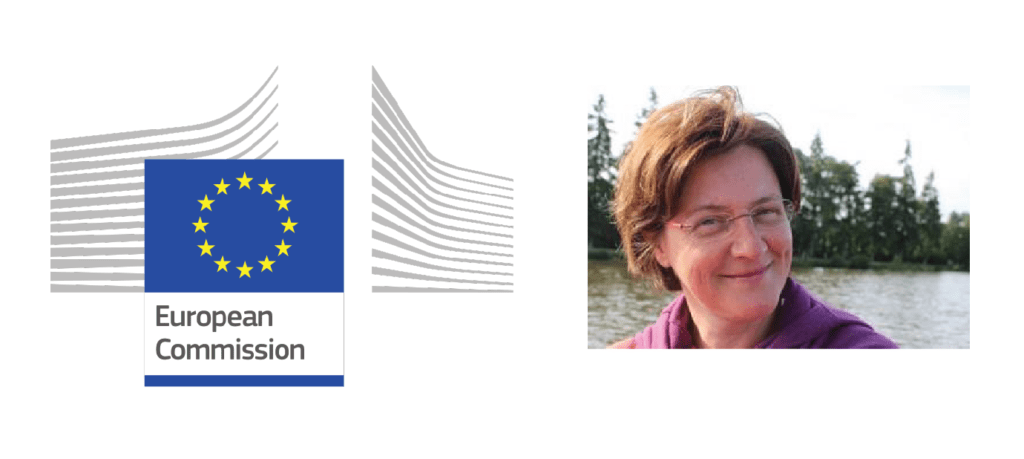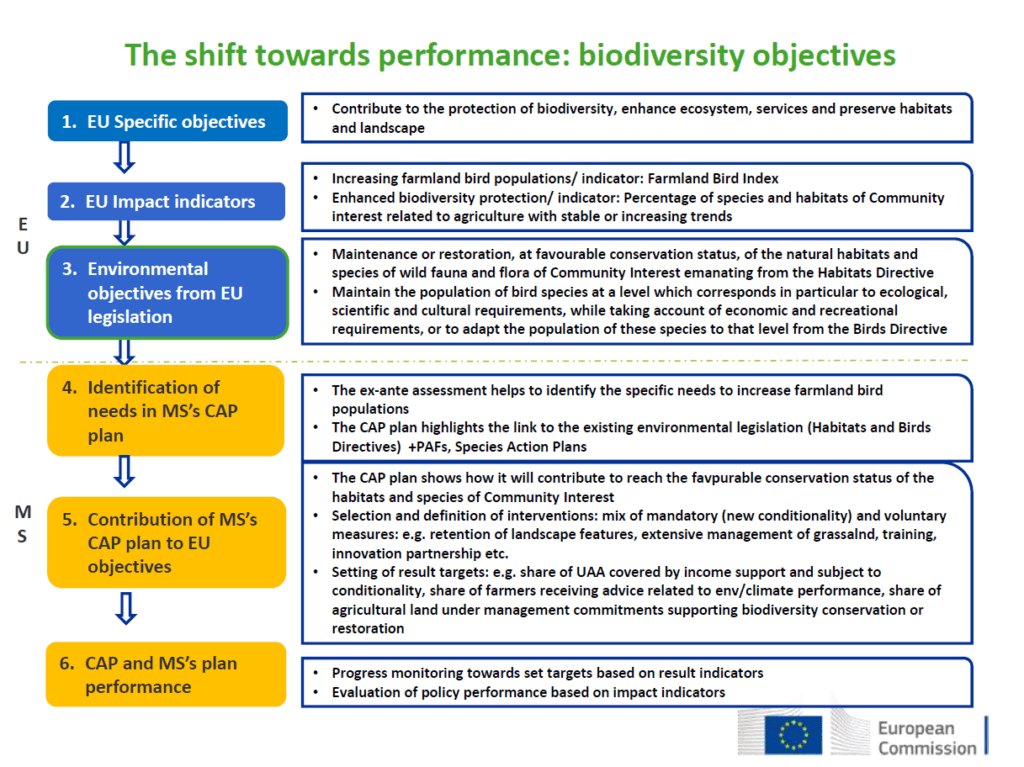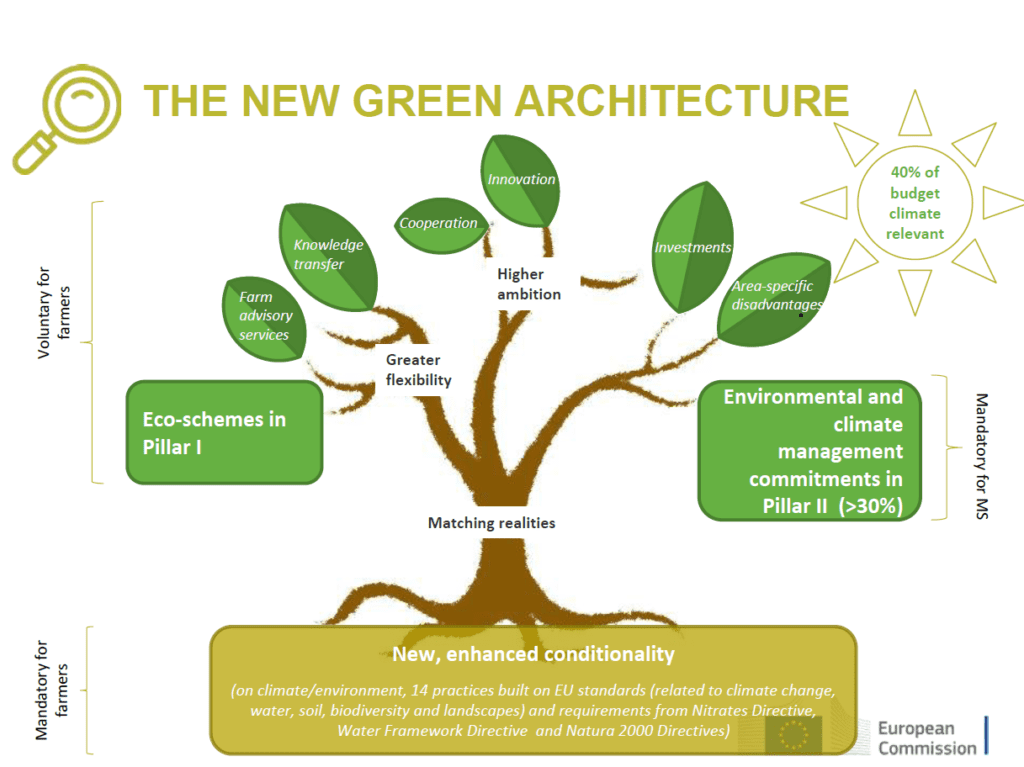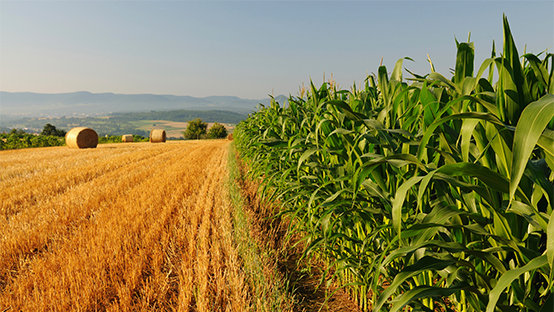A breakfast meeting in the European Commission: the new CAP Proposal
They say breakfast is the most important meal of the day. Well, for our Policy Officer Ms Stefania Petrosillo, Brussels breakfast is combined with work. Here, over a croissant and coffee, she meets Ms Caroline Pottier from the DG ENVI, European Commission, to discuss some environmental aspects of the new CAP proposal.

Caroline Pottier, Policy Officer at the Natural Capital, Youth and Management Unit within the Directorate-General for Environment
Q. Mrs Pottier, the Common Agriculture Policy is a huge and complex topic, therefore we would like to ask you to underline some general points that you consider important for nature protection and environment.
The new CAP will take into consideration several aspects connected with environment, nature conservation, and sustainable use of natural resources. Briefly, I think that the most important points of the proposal presented by the Commission can be summarised as follows;
- A new delivery model: new governance that relies on more subsidiarity to re-balance the roles of all actors.
- CAP objectives: environment and climate (incl. biodiversity) are strongly present.
- “Whole CAP” approach: conditionality details, plus environment-relevant Pillar I and Pillar II interventions, are all planned together in CAP plans.
- Links to non-CAP legislation on environment and climate: CAP plans to take account of analysis, objectives and targets from list of other legislation (incl. biodiversity).
- “No backsliding”: a legal obligation is placed on Member States to raise ambition on environment and climate compared to the current period.
- The new conditionality terms will combine and improve aspects of cross-compliance and “greening“.
- Better toolbox: Pillar I includes “eco-schemes”, which are a new instrument.
- Ring-fencing: Member States will be required to spend at least 30% of EAFRD budget on interventions directly targeted at environment and climate change
Q. Could you say something more about some of these points? Maybe we can start from the new delivery model that will give much more freedom to Member States than before.
Correct. We know that this is an important point in the debate in European Parliament and in the Council. The Member States will have a lot of flexibility to establish their National Agriculture Strategic Plans, but they will have to follow the common indications and objectives stated by the Commission, and the Strategic Plans will be submitted for the Commission’s approval and control.
One important achievement is that the authorities in charge of environment have to be involved in the elaboration, implementation and control of the National Strategic Plans. It means that the new CAP recognises that agriculture is not only a topic for Agriculture’s Ministries, but that the Ministries of Environment and the Regional Authorities for Environment and Nature Protection are also strongly concerned.
The challenge will be if, in reality, these authorities in the Member States and Regions will actually seek proactive integrated involvement.
Q. For instance, until now only the European Council of Agriculture, composed by the national ministries of agriculture, discussed the new CAP proposal… we consider that also the European Council for the Environment, composed by the national ministries of environment, should include this topic in their next meetings.
Indeed. The CAP proposal gives a role to these authorities, but they have to take this opportunity. About the Council meetings, as you know, the agenda is decided by the Member State who has the Presidency (currently Austria) together with the other Member States.
Q. Another important point you mentioned is the link to non-CAP legislation on environment and climate.
Exactly. In Annex III of the proposal, there is a list of 12 items of legislations concerning the Birds and Habitats Directives as well as climate change, water, soil protection, air, animal welfare and public health. National Strategic Plans will have to take account of analysis, objectives and targets from legislation on these topics.

Download the full presentation “The EU Financial Framework post-2020: update on the CAP reform” made by Mr Jérémie Crespin (DG ENVI) at EUROPARC Seminar-Dialogue 2018
Q. The new CAP will maintain the two pillars, the first one, ‘direct payments’, and the second one, ‘rural development’.
The two pillars’ architecture is strongly connected with the previous points. Accordingly, in the proposal, Member States will have a large margin of flexibility to decide the percentage of funds to devote to rural development and they are asked to increase the co-financing. The concrete risk is to see the second pillar and notably the support to environmental measures, becoming weaker in the National Plans. However, rural development is important in strategic terms as it can be used to achieve the link to non-CAP legislation on environment and climate, especially on biodiversity and landscape. Therefore, it will be crucial also for organisations like you and your members, to be engaged at national level to make sure that rural development, which is vital for environment and social aspects, will receive the importance that it deserves and the funds it needs.

Download the full presentation “The EU Financial Framework post-2020: update on the CAP reform” made by Mr Jérémie Crespin (DG ENVI) at EUROPARC Seminar-Dialogue 2018
Q. For European Protected Areas, both pillars are important: in the framework of the first pillar, EUROPARC would like to see the possibility to award farmers located inside or nearby parks and Natura 2000 sites, working sustainably for landscape and nature resources. In the second pillar, we consider that natural protected areas, especially regional parks, play an important role to support rural development.
The ‘direct payments’ supporting farmers’ income will remain central in the new CAP architecture and budget. All farmers’ payments will be submitted to the conditionality, that in the new proposal will be connected to legislations on biodiversity, pesticides, and others. Beside conditionality, a new instrument, the ‘greening’, that was introduced in the current period has not proved to be efficient. The new proposal suggests a new instrument, the “eco-schemes”, for farmers who really make ambitious commitments to observe agricultural practices beneficial for the climate and the environment. However, there is no requirement in terms of budget to be allocated by Member States to these eco-schemes.

© Agriculture_European Commission
Other useful links
Guidance on farming and Natura 2000
Result Based Payment Schemes
Read also EUROPARC Position Paper on the CAP proposal
You found this topic interesting? To find more articles like this one, download the new edition of the EUROPARC Journal Protected Areas In-Sight with a special focus on youth involvement Parks – available in english, german and french!